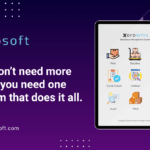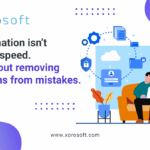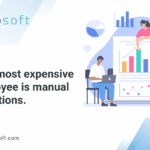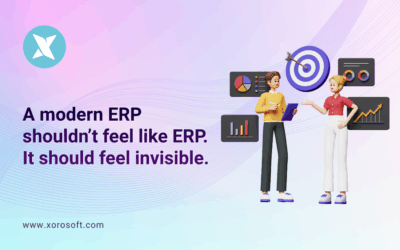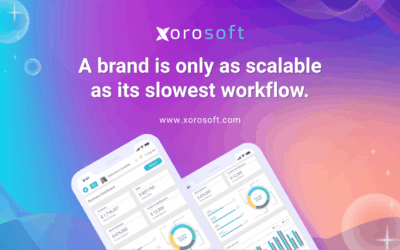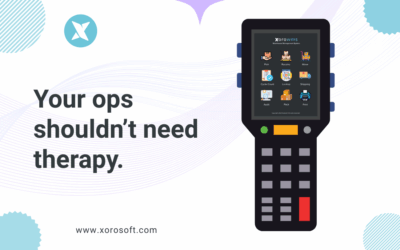
Introduction to Xorosoft ERP and Its Features
Xorosoft ERP is a comprehensive enterprise management solution that empowers businesses to streamline their operations, enhance productivity, and drive strategic decision-making. Designed with a keen focus on user-friendliness and scalability, Xorosoft ERP offers a wide range of features that cater to the diverse needs of organizations across various industries.
At the heart of Xorosoft ERP lies a robust suite of modules, including financial management, inventory control, sales and marketing, human resources, and more. By seamlessly integrating these functionalities, Xorosoft ERP enables organizations to achieve a holistic view of their business, facilitating informed decision-making and optimized resource allocation.
The Role of Access Control in Enhancing Data Security
Access control is a critical component of Xorosoft ERP’s comprehensive data security framework. It involves the implementation of policies and mechanisms that regulate and monitor user access to sensitive information and system functionalities. By carefully defining and enforcing access privileges, organizations can ensure that only authorized individuals can perform specific actions, such as viewing, modifying, or deleting data.
In the context of Xorosoft ERP, access control plays a pivotal role in safeguarding the integrity and confidentiality of your organization’s data. It empowers you to establish a granular level of control over who can access what, when, and how, effectively mitigating the risk of unauthorized access and data breaches.
Benefits of Implementing Access Control in Xorosoft ERP
The implementation of access control in Xorosoft ERP offers a multitude of benefits that can significantly enhance your organization’s data security and overall operational efficiency:
- Improved Data Confidentiality: By restricting access to sensitive information, you can ensure that only authorized personnel can view and interact with critical data, reducing the risk of unauthorized disclosure or misuse.
- Enhanced Compliance and Regulatory Adherence: Robust access control measures in Xorosoft ERP can help your organization comply with industry-specific regulations and standards, such as GDPR, HIPAA, or SOX, mitigating the risk of costly penalties and legal ramifications.
- Increased Operational Efficiency: By streamlining access privileges and eliminating unnecessary permissions, you can optimize workflow processes and minimize the potential for human errors or internal security breaches.
- Better Visibility and Accountability: Xorosoft ERP’s access control features provide detailed audit trails and activity logs, enabling you to monitor user actions, identify potential security threats, and hold individuals accountable for their activities.
- Scalable and Adaptable Security: As your organization grows and evolves, the access control capabilities in Xorosoft ERP can be easily scaled and adjusted to accommodate changing business requirements and security needs.
Key Features of Access Control in Xorosoft ERP
Xorosoft ERP offers a comprehensive suite of access control features that empower organizations to tailor their security protocols to their specific needs:
- Role-Based Access Control (RBAC): Xorosoft ERP allows you to define and assign user roles, each with a specific set of permissions and access privileges. This ensures that individuals can only perform actions and access data relevant to their job responsibilities.
- Granular Permission Management: The system enables you to granularly control access to individual modules, features, and data sets within Xorosoft ERP, allowing you to fine-tune security measures based on your organization’s requirements.
- Multi-Factor Authentication (MFA): Xorosoft ERP supports the implementation of multi-factor authentication, adding an extra layer of security to the login process and safeguarding against unauthorized access attempts.
- Audit Logging and Reporting: The system maintains detailed audit logs of user activities, providing you with valuable insights into access patterns and enabling you to identify and investigate any suspicious or anomalous behavior.
- Centralized User Management: Xorosoft ERP’s user management capabilities allow you to efficiently onboard, offboard, and manage user accounts, ensuring that access privileges are always up-to-date and aligned with your organization’s evolving needs.
- Integration with Identity Management Systems: Xorosoft ERP seamlessly integrates with leading identity management solutions, allowing you to leverage existing user credentials and access control policies for a unified and streamlined security approach.
Best Practices for Implementing Access Control in Xorosoft ERP
To maximize the benefits of access control in your Xorosoft ERP implementation, consider the following best practices:
- Conduct a Comprehensive Risk Assessment: Begin by thoroughly analyzing your organization’s data security needs, identifying critical assets, and assessing potential risks and vulnerabilities. This will help you develop a tailored access control strategy.
- Establish Clear Policies and Procedures: Define and document your organization’s access control policies, outlining roles, responsibilities, and guidelines for user management, privilege assignment, and incident response.
- Implement Least Privilege Principle: Ensure that users are granted the minimum level of access required to perform their job duties, minimizing the risk of unauthorized actions and data exposure.
- Regularly Review and Update Access Privileges: Continuously monitor and review user access privileges, adjusting them as roles, responsibilities, and business requirements evolve over time.
- Provide Comprehensive User Training: Educate your employees on the importance of access control, their individual responsibilities, and the proper procedures for accessing and handling sensitive information within Xorosoft ERP.
- Establish Robust Monitoring and Auditing Processes: Leverage Xorosoft ERP’s audit logging and reporting capabilities to closely monitor user activities, detect anomalies, and investigate potential security incidents.
- Integrate Access Control with Other Security Measures: Combine access control with other security controls, such as data encryption, network segmentation, and disaster recovery planning, to create a multilayered defense against cyber threats.
Integrating Access Control with Other Modules in Xorosoft ERP
The power of access control in Xorosoft ERP lies in its ability to seamlessly integrate with the system’s other modules, creating a cohesive and comprehensive security framework. By aligning access control policies with the specific functionalities and data requirements of each module, you can ensure that sensitive information is protected across the entire ERP ecosystem.
For instance, in the financial management module, access control can be used to restrict user permissions for sensitive transactions, such as approving payments or modifying accounting records. In the inventory management module, access control can be implemented to control who can view, update, or transfer inventory items, mitigating the risk of theft or mishandling.
Similarly, the human resources module can benefit from access control by limiting access to employee personal information, ensuring compliance with data privacy regulations. The integration of access control with other Xorosoft ERP modules empowers organizations to maintain a consistent and holistic approach to data security, reducing the likelihood of security breaches and enhancing overall operational efficiency.
Choosing the Right Access Control Solution for Your Xorosoft ERP Implementation
When selecting an access control solution for your Xorosoft ERP implementation, it is crucial to consider the specific needs and requirements of your organization. Factors such as the size of your business, the complexity of your data landscape, and your industry’s regulatory compliance requirements should all be taken into account.
Xorosoft ERP offers a robust and flexible access control solution that can be tailored to meet the unique needs of your organization. The system’s comprehensive features, including role-based access control, granular permission management, and integration with identity management systems, provide a solid foundation for enhancing data security and ensuring compliance.
Additionally, Xorosoft’s team of experienced professionals can work closely with you to assess your security requirements, design a customized access control strategy, and provide ongoing support and optimization to ensure that your Xorosoft ERP implementation remains secure and efficient over time.
Conclusion: Unlocking the Potential of Access Control in Xorosoft ERP for Enhanced Data Security
In the ever-evolving landscape of data security, the implementation of access control within Xorosoft ERP emerges as a critical safeguard for organizations seeking to protect their most valuable asset: their data. By leveraging the powerful features and capabilities of Xorosoft’s access control solution, you can establish a multilayered defense against cyber threats, ensure compliance with industry regulations, and foster a culture of accountability and trust within your organization.
As you embark on your Xorosoft ERP implementation journey, I encourage you to prioritize the integration of robust access control measures. By doing so, you will unlock the full potential of your ERP system, safeguarding your data, optimizing your operations, and positioning your organization for long-term success in the digital age.
To learn more about how Xorosoft ERP’s access control features can enhance your data security, book a demo with our experts today. Our team will work closely with you to design a tailored access control strategy that aligns with your business needs and security requirements.


